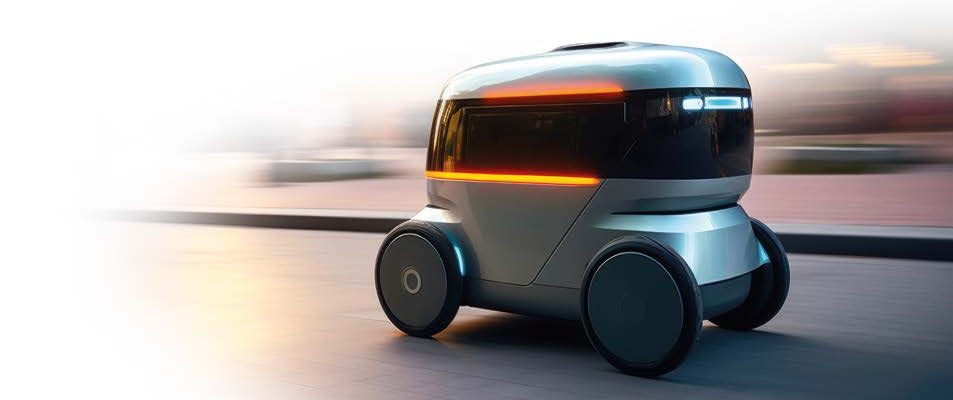The best way to keep in touch with Hand Picked Hotels is to sign up to our news, offers and events below. Please do read our Privacy Policy for more information on how we use your data and you can of course opt out at any time.
The Rise of Robotics
From Personal Computing to Robot Deliveries: Henrietta Mackenzie shares some insight into a recent history of electronics.
You may remember a time when we used paper maps instead of Google Maps and always phoned our friends instead of sending WhatsApp messages. When we only shopped in-store rather than on Amazon and used office desktop computers, instead of having work and home laptops. Electronics have accelerated so rapidly that these activities often feel like relics of the past.
Today, electronics touch every aspect of how we communicate, work and play. From the moment we wake up and check our smartphones for messages and social media updates, to the hours spent working on laptops, to relaxing in the evening streaming movies on our tablets or smart TVs, while waiting for our online shopping to be delivered. Connecting to electronic devices has now become so ingrained in our lives, that Wi-Fi has emerged as one of the primary human needs.
How did we get here?
From the launch of personal computing and the mass adoption of smartphones to the creation of robotics, the tale of electronics is a story of unwavering creativity and game-changing progress, and it just keeps getting more intriguing.
Let’s start by going back to the 1980s.
While Apple and IBM played significant roles in the early development of personal computing, British company Amstrad, founded by Sir Alan Sugar, made an important contribution to the personal computer market by producing affordable and user-friendly home computers, such as the Amstrad CPC series. Its best-seller, the Amstrad CPC 464, was released in 1984 and sold more than two million units in Europe. This computer featured an integrated tape deck for loading programs and games, and its affordability made it accessible to a wide audience.
The CPC series not only introduced people to personal computing, but also created a community of enthusiasts who shared programs and knowledge. Overall, Amstrad computers brought the digital world into homes across the globe and sparked the imaginations of a generation.
If we move on to the 2000s, the idea of managing our lives from a pocket-sized computer seemed unimaginable. But since the launch of smartphones, they have evolved from basic communication tools to critical digital companions, allowing us to connect, work, play, and explore like never before.
The launch of the iPhone in 2007 marked a pivotal moment, introducing touchscreens, mobile apps, and internet access in a single device. They became integral to daily life, empowering users with instant access to information, social media, GPS navigation, and a myriad of apps catering to diverse needs. Their impact extends across industries, reshaping business models, creating the app economy, and contributing to the digital age’s connectivity and convenience.
Breaking New Boundaries

Now, let’s turn our gaze to the future of electronics, where innovation continues to break boundaries.
One of the most promising and exciting prospects is the launch and integration of robotics into our lives, particularly in the field of delivery services. Picture this: a world where your online orders are delivered not by a human courier, but by a fleet of autonomous delivery robots. And this vision is closer than you think. Retail outlets are trialling food delivery robots to reduce traffic congestion. Customers can select their products, arrange for their robot delivery, and then pinpoint the desired delivery location. They also have the option to track the robot’s real-time journey using an interactive map.
Robot deliveries offer various advantages: speed, precision, and efficiency in a way that human deliveries can’t match. With sophisticated sensors and artificial intelligence algorithms, these electric-powered robots could navigate complex urban environments, avoiding obstacles and delivering packages to your doorstep with great accuracy. They also have the potential to reduce carbon emissions by replacing traditional delivery trucks.
By exploring the recent history of electronics, we can see human ingenuity, innovation, and a drive for progress. From the modest beginnings of personal computing to smartphones that transformed how we communicate and work, electronics have come a long way. These milestones highlight our hunger for convenience, connectivity, and efficiency. The rise of robotics also demonstrates our quest for automation and blurring the lines between the digital and physical world. So, as we reflect on electronics past, present, and future, we are reminded that the landscape is ever-evolving, promising even more exciting creations ahead.
